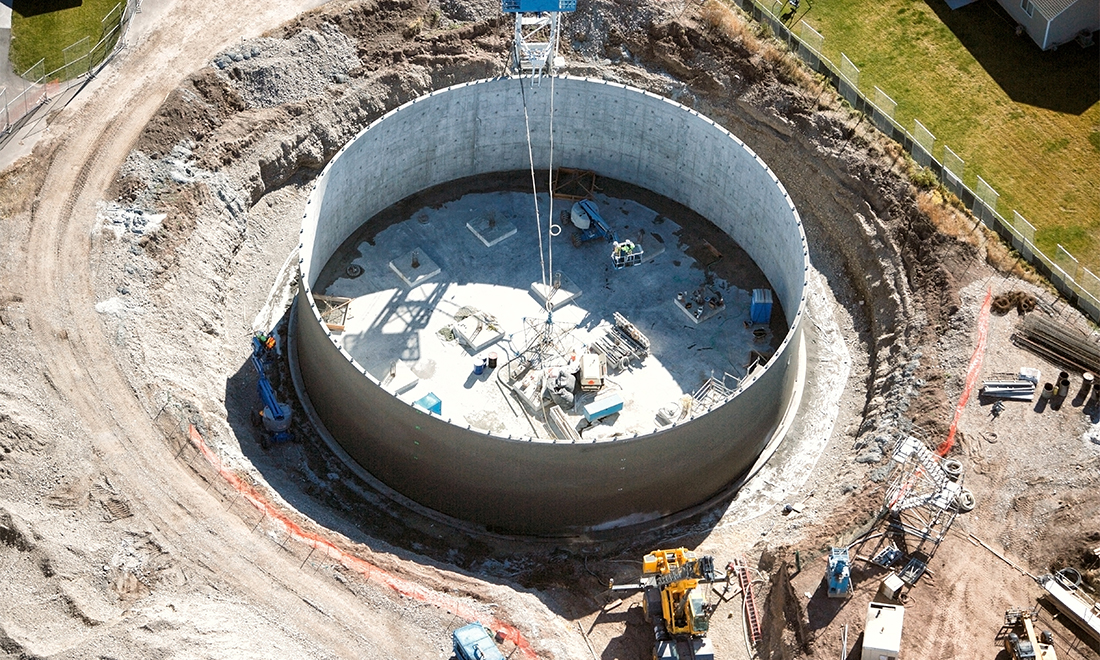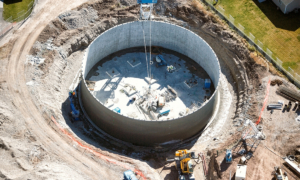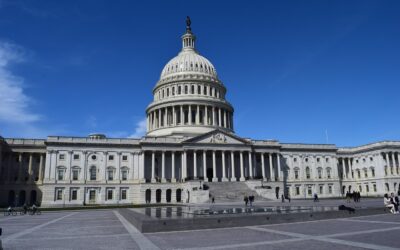There is great concern about America’s water resources. Throughout the country, public officials are focused on water resources and sound water management practices because of the scarcity of this resource. As of October 18, 2022, a total of 43 states were experiencing moderate drought or worse.
Surface reservoirs have traditionally been the ‘go to’ solution for water storage in the past. However, these structures require large tracts of land which makes them extremely costly. Because of that, there is a strong trend toward new kinds of water storage solutions.
Last week, the Department of the Interior announced it will invest $210 million to stabilize critical water security needs. The disbursement (which will be annual) is designated for water storage projects in areas of the country where drought conditions have been especially punishing.
This funding, however, represents only the most recent federal funding program for water security. Over the next five years, a combined $1.05 billion from the Infrastructure Investment and Jobs Act (IIJA) will be available to ensure water security. The federal money can be used for planning, design, construction, or repair of water infrastructure. Much of the funding will be used for projects that help communities store impaired water—such as groundwater and surface water—for eventual reuse.
Another $8.3 billion in federal funding from the Bureau of Reclamation has also been authorized to advance drought resilience and expand water access over the next five years. Underground water storage projects will also be eligible to receive support from this line of funding.
If federal funding is not enough, state legislators are also addressing water resources. All parties understand the importance of water storage. This summer, California’s governor announced $27 billion in state funding to address the effects of drought. The state will invest in projects that expand statewide water storage capacity with reservoirs and underground aquifers.
One objective mandated with the funding in California is a $385 million project that will construct storage for an additional 15 thousand acre-feet of water per year. The large scope of this Chino, California-based water storage project involves a wastewater treatment plant and a series of interconnected distribution facilities. The Inland Empire Utilities Agency has been selected to spearhead the Chino Basin Program.
A $371 million effort will be launched in Austin, Texas to capture water from lakes during high rainfall periods, treat the water, store it underground, and then recirculate it during times of drought. Similar projects have already been developed with success in other Texas cities – Kerrville, El Paso, and San Antonio. Underground aquifers are popular in Texas as they help protect water supplies from evaporation during hot summers. To ensure sanitation, the stored water is treated before it is pumped into the underground structure and then again when it is extracted. There are many hurdles to overcome before construction is launched, but water officials will pilot a small-scale version of the project in the near term. It will carry a projected cost of tens of millions of dollars.
King County officials in the state of Washington will construct a 1.25-million-gallon underground storage tank to hold stormwater and wastewater overflow. The water storage project will help mitigate the recurrence of overflow and pollution running into the nearby Duwamish River during storm surges. Water collected in the new storage tank will then be conveyed to an existing treatment plant before ultimately being released into the Puget Sound. The project, with a projected cost of $53 million, is currently in its design stage. An ongoing period of community engagement will help determine additional design details for other components such as fencing, landscaping, and aesthetic features.
Another Washington state-based water storage project is also underway in the city of Seattle. The city’s water utility is working on the design for a new partially buried 21-million-gallon concrete tank to store excess stormwater and wastewater for eventual treatment. The new storage facility will replace an existing reservoir which has exceeded its service life. As design, permitting, and community engagement work unfolds, the city’s utility officials will refine cost estimates for the effort.
A $27 million water storage reservoir is being designed for the city of Menlo Park, California. It will provide storage for municipal water for operational, emergency, and fire flow needs. The project is being designed in conjunction with plans for a new booster pump station that will convey the reserve water supply to sites identified by need.
Water storage also represents a major component of the Texas Water Development Board’s 2022 State Water Plan. It outlines plans for significant investment in aquifer storage and recovery projects. Most projects will be designed to inject water into underground storage structures (aquifers) for future use. The state plan describes the objective to add 193,000 acre-feet of new water supplies per year for the next several years. It also estimates a total capital cost of $3.8 billion for development of its several recommended aquifer storage reserve projects.
Water projects of all types will be abundant over the next few years and if droughts continue, funding to ensure adequate water for future use will escalate quickly. Contractors able to provide services related to water projects are already in high demand and that will increase significantly whether droughts occur or not.








